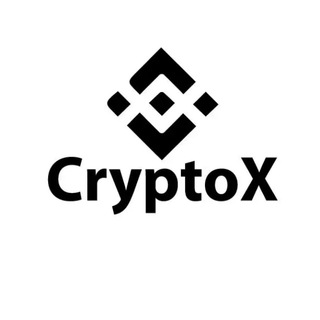Hardware Wallets: The Ultimate Cold Storage Solution
Imagine waking up one morning, checking your phone, and realizing all your Bitcoin is gone. Not because you spent it, but because someone hacked your exchange account. Scary, right?
This happens more often than people think. Hackers target crypto exchanges, phishing scams trick users into revealing their private keys, and malware can drain a software wallet in minutes. That’s why serious Bitcoiners and crypto holders use hardware wallets—the safest way to store digital assets.
In this guide, we’ll break down everything you need to know about hardware wallets. Think of it as your go-to security solution for crypto.
What is a Hardware Wallet?
A hardware wallet is a small, physical device that stores your private keys offline. Unlike a mobile or web wallet, which stays connected to the internet, a hardware wallet keeps your crypto safe from hackers, viruses, and phishing scams.
Think of it like this: If a software wallet is like keeping cash in your pocket, a hardware wallet is like storing gold in a high-security vault. It’s not something you use for every transaction, but it ensures that no one can steal your assets remotely.
Popular hardware wallets include Ledger Nano S, Ledger Nano X, Trezor Model T, and Coldcard (a favorite among Bitcoin maximalists).
Why is a Hardware Wallet Important?
Here’s a fact: If you don’t control your private keys, you don’t really own your crypto.
When you keep crypto on an exchange, the exchange holds your private keys. That means if the exchange gets hacked, goes bankrupt, or decides to freeze withdrawals, your crypto is at risk. History has seen disasters like Mt. Gox, FTX, and QuadrigaCX, where people lost billions of dollars in crypto because they trusted centralized platforms.A hardware wallet solves this problem. It puts you in full control of your assets. No third parties. No risk of an exchange suddenly shutting down and locking your funds. It’s true self-custody.
How Does a Hardware Wallet Work?
Using a hardware wallet might sound technical, but it’s actually simple. Here’s how it works:
- Setup – You connect your hardware wallet to a computer or phone and follow the setup instructions. During this process, you’ll receive a seed phrase (usually 12 or 24 words). This is the backup for your wallet—never share it with anyone.
- Transaction Signing – When you want to send crypto, you connect your hardware wallet, enter the details, and confirm the transaction on the device itself. Since the private keys never leave the device, hackers can’t steal them.
- Cold Storage – When not in use, the hardware wallet stays offline, making it nearly impossible for hackers to access.
Example: Let’s say you have 1 Bitcoin. You store it in a Trezor Model T. Even if your computer gets hacked or a virus tries to steal your keys, your Bitcoin stays safe because the private key never touches an online system.
Best Practices for Hardware Wallets
Owning a hardware wallet is great, but you need to use it correctly. Here are some golden rules:
- Backup Your Seed Phrase – When setting up your wallet, you’ll get a 12- or 24-word seed phrase. Write it down on paper, not on your phone or computer. If you lose your wallet, this phrase is the only way to recover your funds.
- Never Share Your Seed Phrase – If someone gets your seed phrase, they can steal your crypto. No customer support, no password reset. Game over.
- Buy from Official Sources – Always buy hardware wallets from the official website or an authorized reseller. A second-hand or tampered device could be compromised.
- Keep It Offline – Don’t connect your hardware wallet to a computer unless you’re making a transaction. The less exposure, the safer it is.
- Enable a PIN – Most hardware wallets allow you to set up a PIN. If someone steals your device, this adds an extra layer of protection.
Consider a Passphrase – Some wallets let you add a passphrase on top of the seed phrase. This adds another layer of security in case someone finds your seed phrase.
Who Needs a Hardware Wallet?
If you’re holding more than a few hundred dollars worth of crypto, a hardware wallet is a must.
It’s especially important if:
- You plan to hold your crypto for the long term (HODLing)
- You don’t trust exchanges or online wallets
- You’re worried about hacking, phishing, or government seizures
For example, let’s say you have $5,000 worth of Bitcoin. Storing it on an exchange leaves it vulnerable. With a hardware wallet, it’s like putting your cash in a high-security safe.
The Future of Hardware Wallets
As crypto adoption grows, so does the need for better security. Hardware wallets are evolving to be more user-friendly and secure. Newer models include features like:
- Bluetooth connectivity (Ledger Nano X)
- Touchscreens (Trezor Model T)
- Air-gapped security (Coldcard)
- Multi-signature support (ideal for businesses and high-net-worth individuals)
Some believe that smartphones could eventually integrate hardware wallet-level security. But for now, dedicated hardware wallets remain the gold standard for cold storage.
Conclusion: Take Control of Your Crypto
In the crypto world, security isn’t optional—it’s essential. If you want to truly own your Bitcoin and other digital assets, a hardware wallet is the best way to protect them.
With so many threats out there—exchange hacks, phishing scams, malware—you need a bulletproof way to store your wealth. That’s exactly what hardware wallets offer.
So, if you haven’t already, take the plunge. Get a hardware wallet, secure your seed phrase, and sleep easy knowing your crypto is safe.











